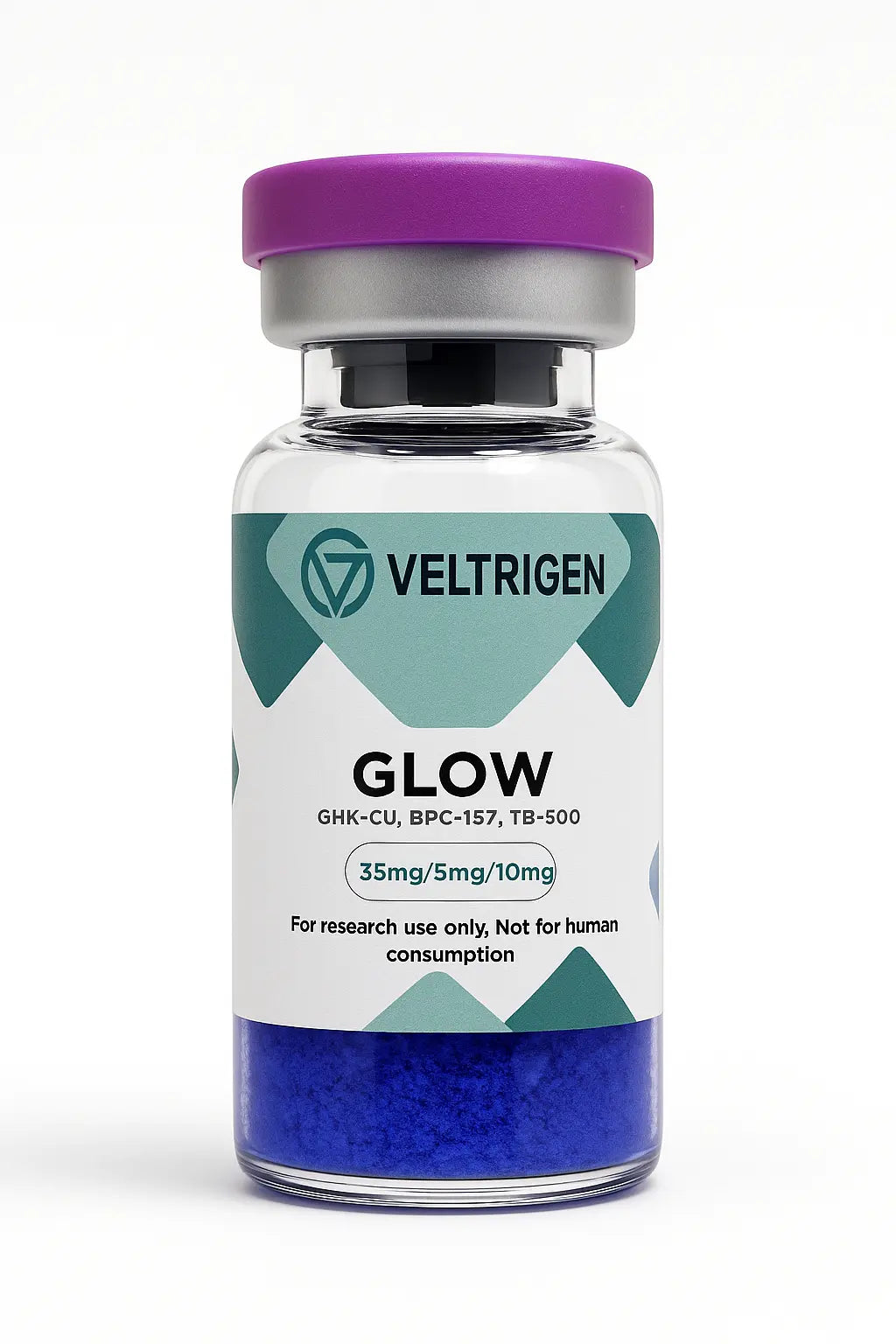
GLOW Blend: A Multi-Peptide Formula for Advanced Research
Share
The GLOW blend combines four well-studied research peptides — GHK-Cu, BPC-157, TB-500, and KPV — into a single formulation designed for laboratory investigation. Each component has been studied for unique biological activities in preclinical models, ranging from cellular repair to inflammation pathways. Together, these peptides provide researchers with a versatile subject for experimental study across multiple systems.
What Is the GLOW Blend?
The GLOW blend is a multi-peptide research formulation composed of:
-
GHK-Cu: A copper-binding tripeptide explored for its role in skin, hair, and tissue repair.
-
BPC-157: A pentadecapeptide studied for regenerative and angiogenic potential.
-
TB-500 (Thymosin Beta-4 fragment): Investigated in muscle recovery and cytoskeletal dynamics.
-
KPV (Lys-Pro-Val): A tripeptide derived from alpha-MSH, examined for anti-inflammatory properties.
This combination allows researchers to study multiple pathways simultaneously, particularly those involving regeneration, cellular protection, and immune signaling.
Key Areas of Research
1. Skin and Cosmetic Models (GHK-Cu)
Preclinical studies suggest that GHK-Cu may influence collagen production, angiogenesis, and wound healing. It has been widely studied in models of skin rejuvenation and tissue repair.
2. Tissue Regeneration (BPC-157 and TB-500)
Both BPC-157 and TB-500 have been explored for their effects on muscle, tendon, and ligament regeneration. While BPC-157 is noted for its angiogenic potential, TB-500 has been linked to actin regulation, cell migration, and recovery in injury models.
3. Inflammation Pathways (KPV and BPC-157)
KPV is a tripeptide with strong anti-inflammatory interest in laboratory settings, particularly in immune-mediated pathways. In combination with BPC-157, which has also been studied for inflammation modulation, the blend offers multiple angles for exploring immune balance in experimental models.
4. Systemic Versatility
The blend’s combined activity makes it suitable for studying multi-system processes in preclinical environments, including angiogenesis, tissue remodeling, and neuroinflammatory responses.
Advantages for Researchers
-
Multi-pathway activity: Allows study of regeneration, inflammation, angiogenesis, and cellular protection simultaneously.
-
Synergistic potential: Peptides chosen for complementary research roles.
-
Established research history: Each peptide has an expanding preclinical literature base.
Compliance and Research Use Only
It is important to note that the GLOW blend is for laboratory research purposes only. It is not approved for human use, clinical application, or diagnostic purposes. Researchers should handle it only in controlled environments and in compliance with all applicable regulations.
Conclusion
The GLOW blend provides a unique opportunity for researchers to explore a multi-faceted peptide formulation. With GHK-Cu, BPC-157, TB-500, and KPV working together, the blend represents an advanced tool for studying regeneration, inflammation, and cellular processes in laboratory settings.